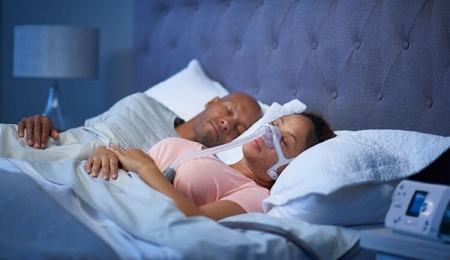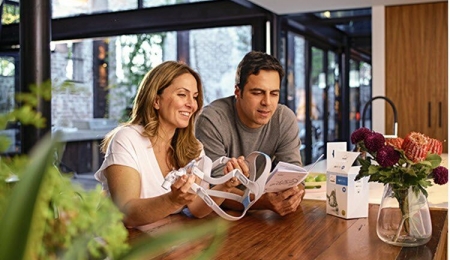

What are the signs of sleep apnea? In recent blog posts, we’ve explored some of the more serious conditions associated with sleep apnea. We’ve also gone into depth on the use of continuous positive airway pressure (CPAP) as a means to treat sleep apnea. (What is CPAP? Find out here.) But let’s back up just a bit, and take a look at some of the more common signs of sleep apnea found in people not yet diagnosed, or who have been diagnosed but haven’t yet begun therapy.
The most common signs of sleep apnea
Snoring. In obstructive sleep apnea (OSA), your breathing airway is blocked by the muscles in your throat. This causes the choking and/or gasping for air commonly associated with sleep apnea – and it also causes snoring. “A person with obstructive sleep apnea usually begins snoring heavily soon after falling asleep,” explains MedlinePlus, a website of the National Institutes of Health. “Often the snoring gets louder. The snoring is then interrupted by a long silent period during which there is no breathing. This is followed by a loud snort and gasp, as the person attempts to breathe. This pattern repeats.”
Drowsiness/sleepiness. “Sleep apnea is a leading cause of excessive daytime sleepiness,” according to the National Heart, Lung and Blood Institute. The reason is simple: When you have untreated sleep apnea, you’re not sleeping well; you’re waking up many times throughout the night, even if just for a few seconds, and even if you don’t remember it. Needless to say, lack of proper sleep will lead to a feeling of sleepiness throughout your day. (Read more about the effects of sleep deprivation.)
Headaches. Headaches are one of the most common signs of sleep apnea, especially headaches that you feel right when you wake up. “These headaches are of brief duration, and their occurrence and severity increase with increasing OSA severity,” concludes a 1999 study published in the Archives of Internal Medicine.1 “Treatment of OSA with continuous positive airway pressure … can reduce these headaches.”
“Treatment of OSA with continuous positive airway pressure… can reduce [sleep apnea] headaches.”
Nighttime sweating. Although it’s not one of the signs of sleep apnea that’s most often mentioned, a 2013 study based in Iceland found that nighttime sweating “was threefold higher in untreated OSA patients than in the general population.”2 The study also noted that treating sleep apnea with positive airway pressure (PAP) decreased nighttime sweating, and advised doctors to “consider the possibility of OSA in … patients who complain of nocturnal sweating.”
Additional signs of sleep apnea
Besides the signs of sleep apnea listed above, there are numerous other symptoms associated with this common condition, including teeth grinding during the night, difficulty concentrating, memory loss, feelings of irritability or depression, mood swings, frequent nighttime urination, and dry mouth or a sore throat upon waking up.
Like the signs of sleep apnea listed above, these symptoms don’t always mean that someone has sleep apnea. But, if you’re experiencing one of more of them regularly, it’s probably time to consult your doctor about whether or not you have a sleep-related breathing disorder, and see if a sleep test is in your future.
